There was no bank on Kent Island before 1900. With limited resources and a concerted effort a corporation was formed in 1903. The name of the corporation was “The Stevensville Saving Bank of Queen Anne’s Country.” Later in 1912 the name was changed to “The Stevensville Bank of Maryland.” The president of the new corporation was Charles B. Downs. Original bank-directors included: Charles Percy Kemp, Milton Hysore Price, Issac Grollman, B. Harrison Bright, William E. Denny, Sr. Hugh A. Legg, and John Fletcher Ruth. The capital stock was $8,000 divided among 160 shares at par value of $50.00 each. The fledgling bank opened the doors for depositors and borrowers. At this early date, prior to the construction of a bank building, it is not known where the business transactions took place, but deposits were made and loans were executed. A tract of land formerly owned by Dr. William E. Denny was obtained. It was the location of an apothecary shop operated by Dr. Denny’s sister and niece, Miss Anne and Miss Lucy Denny.
In 1909 the single story, two room structure was completed, and after a six year wait, the bank in Stevensville had a permanent home. The building is of plain design, solid with a stucco exterior. The original ornamental pressed-tin ceiling has survived intact. The bank originally had a projecting hood over the entrance door that derived support from heavy chains anchored into the wall, in the style of the marquee hoods found in the turn-of the-century theatres. The bank contained no running water or bathroom facilities and had the dubious distinction of being the last bank in Maryland to have outdoor toilets when it closed in 1960.
For fifty years it was the financial center of Kent Island. The capital stock increased with good times and it weathered the severe economic depression of the early thirties. The opening of the Bay Bridge in 1952 brought new growth and dramatic changes. In 1960 the name was again changed to “The Tidewater Bank” and with the new name, a new location- that of the Kent Island Shopping Center area adjacent to Route 50-301. The bank was then sold to Mr. Harper M. Smith. It housed the office for the newly create Bay Times newspaper owned by Chris and Mary Lou Rosendale. Several businesses occupied the building after the newspaper office moved. The present owner is Mr. Robert L. Marsteller. The building was placed on the National Register of Historic Places in 1983 and is being leased by the Kent Island Heritage Society, Inc. as part of its purpose to identify, preserve, and maintain the heritage of Kent Island.
The Kirwan House, home of f0rmer Maryland State Senator James E. Kirwan (1900-1908), and the adjacent store were built in 1889 from lumber from the Johnstown floodwaters that flowed down the Susquehanna River into the Chesapeake Bay carrying vast quantities of wood. The store was the hub of the Chester / Dominion communities, serving as a conduit for the lumber and coal that was unloaded from boats at Kirwan’s Creek on which the house is located. Senator Kirwan’s granddaughter, Mary Katherine Kirwan, willed the house and store to the Kent Island Heritage Society, Inc., who operate the property as a museum.
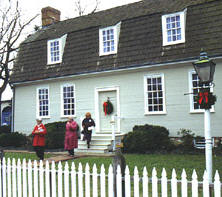 Now situated at 119 S. Commerce Street, Wright’s Chance was moved four miles from its original site. This circa 1744 plantation house still has its original paneling and glass windows and is one room deep and two rooms wide with a central hallway and large fireplace. A gambrel roof provided for living space upstairs. The 18th century furnishings include original William Paca chairs, Chippendale and Hepplewhite furniture and Canton china. Wright’s Chance was restored and is operated by the Queen Anne’s County Historical Society.
Now situated at 119 S. Commerce Street, Wright’s Chance was moved four miles from its original site. This circa 1744 plantation house still has its original paneling and glass windows and is one room deep and two rooms wide with a central hallway and large fireplace. A gambrel roof provided for living space upstairs. The 18th century furnishings include original William Paca chairs, Chippendale and Hepplewhite furniture and Canton china. Wright’s Chance was restored and is operated by the Queen Anne’s County Historical Society.
Not long after the Civil War, the Queen Anne’s and Kent Railroad laid track to Sudlersville’s doorstep heralding a period of growth. By 1869 the railroad provided transportation not only to those who lived in and around rural Sudlersville, but it also provided a faster means of getting grains and produce to market. By the time a new passenger station was built in 1885, the town had already doubled in size from 15 to 39 homes.
 Sudlersville Train Station, at 101 Linden Street, remains at its original site. The historic building was purchased in 1987 and restored by the Sudlersville Community Betterment Club. Today the station houses Jimmy Foxx memorabilia and exhibits which highlight Sudlersville’s history.
Sudlersville Train Station, at 101 Linden Street, remains at its original site. The historic building was purchased in 1987 and restored by the Sudlersville Community Betterment Club. Today the station houses Jimmy Foxx memorabilia and exhibits which highlight Sudlersville’s history.
Out of hundreds of mills on the East Coast in colonial times, only a few survive, and fewer still operate. As the oldest working mill in Maryland (1682), the flour-producing “grist” mill after which the town of Wye Mills was named participated in three centuries of war, nation-building, industrial invention and agricultural heritage. During the American Revolution, the Wye Grist Mill and hundreds of others like it on the Eastern Shore shipped barrels of flour via the Chesapeake Bay to the Continental Army, commanded by General George Washington. Historians dubbed the Eastern Shore the “Breadbasket of the Revolution.”
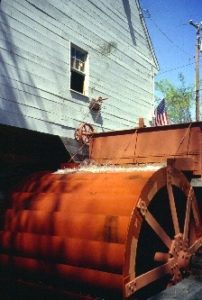 Prominent owners of the Mill included Richard Bennett III, Edward Lloyd III and IV (owners of Wye House) and Colonel William Hemsley, Commander of the Queen Anne’s County Militia and provisioner to the Continental Army, 1779-1783. Oliver Evans, “Father of the Modern Factory” and first great American inventor, used the Wye Grist Mill in the 1790’s to formulate automation ideas that revolutionized American factories.
Prominent owners of the Mill included Richard Bennett III, Edward Lloyd III and IV (owners of Wye House) and Colonel William Hemsley, Commander of the Queen Anne’s County Militia and provisioner to the Continental Army, 1779-1783. Oliver Evans, “Father of the Modern Factory” and first great American inventor, used the Wye Grist Mill in the 1790’s to formulate automation ideas that revolutionized American factories.
The Friends of Wye Mill, a local visitor-supported charity, lovingly preserves and operates the Mill, grinding flour to this day using two massive grindstones powered by a 26 horsepower overshot waterwheel. “Millers” sell flour and offer tours April – November 10:00 a.m. to 4:00 p.m. Thursday – Sunday; and demonstrate flour grinding every first and third Saturday. Closed November – April. The mill is listed on the National Register of Historic Places.
Tucker House, built circa 1794 by James Kennard, is a six-room house with six fireplaces connected to one main chimney. Built on the second lot to be sold in Centreville, Tucker House stands as a great architectural example of the Federal Period.
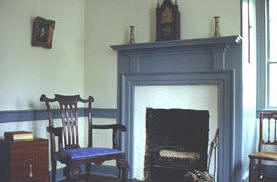
Originally the house was two rooms deep and one room wide and in 1797 its value was assessed at $867. The house was enlarged twice, once around 1815 and again in the late 19th century. The home was purchased by the Tucker family in 1898 and donated to Queen Anne’s County Historical Society in 1968.
Today Tucker House is home to the society’s office and collection of genealogical records, furniture from several periods including a late 18th century desk, Chippendale and Hepplewhite furniture, Rose Medallion china, a spinning wheel and a quilting frame. Also of note are the post and plank meat house in the backyard and the small garden that is maintained by Queen Anne’s Garden Club.
Many early Methodist leaders preached at Dudley’s Chapel, including Bishop Francis Asbury, Jesse Lee (first Methodist historian) and Freeborn Garrettson (first Native American Methodist minister). Located off Route 300, west of Sudlersville, the chapel dates back to 1783 and stands as the first Methodist meeting house in the county and one of the nation’s earliest.
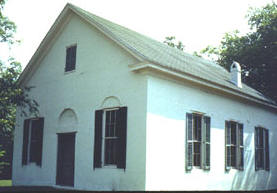 The Queen Anne’s Methodists Society was organized in 1774 and oversaw the chapel’s construction. This chapel is an outstanding example of an early rural church.
The Queen Anne’s Methodists Society was organized in 1774 and oversaw the chapel’s construction. This chapel is an outstanding example of an early rural church.
With its rectangular plan and steep gable roof it typifies late 18th century churches in Maryland. The use of brick in the chapel, rare for the times, attests to the importance of the church and the affluence of the congregation.
This train station was built in 1902, when the Queen Anne’s County Railroad Company extended its western terminus 13 miles from Queenstown to Love Point. A connection was then made at Love Point with steamboats for transport across the Chesapeake Bay.
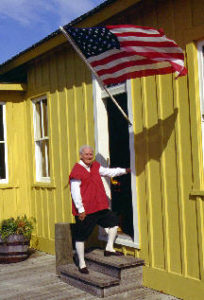 Passengers, seafood and produce were the main cargos from Kent Island to Baltimore. The return trip, through depots like this, brought clothing, iron products, newspapers, and the U.S. Mail to the Eastern Shore.
Passengers, seafood and produce were the main cargos from Kent Island to Baltimore. The return trip, through depots like this, brought clothing, iron products, newspapers, and the U.S. Mail to the Eastern Shore.
The rail system ran for more than 60 miles, from Kent Island to Lewes, Delaware. This structure, typical of the period, was moved in 1988 from its original location just north of Stevensville and restored by the Kent Island Heritage Society.
Kennard High School was the first and only secondary school in Queen Anne’s County for African Americans. It served students in 7th through 12th grades and opened in the fall of 1936. The building consisted of four rooms, and cost $2,600 to build. That cost did not include lights, however, and the local African-American community donated money to purchase lights. The names of the people who contributed a light were placed on the cornerstone of the building. The school operated until 1966 when schools in Queen Anne’s County were integrated.
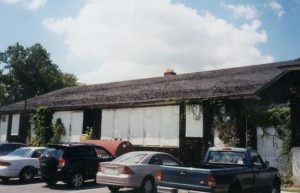 The Kennard Alumni Association has recently restored the building and plans have been completed for creating a cultural arts center for the community.
The Kennard Alumni Association has recently restored the building and plans have been completed for creating a cultural arts center for the community.
Today’s Art Deco theater was designed and built at the foot of Walnut Street as a town hall in 1929. Elwood Coleman planned its use for meetings and community gatherings. The building was the site of graduations and card parties before motion picture equipment was installed in 1935.
 The first movie, Steamboat Round the Bend, starring Will Rogers, was shown here in December 1935. A 1944 fire in the projection booth damaged the movie house’s interior, but the building reopened later that year after extensive renovations. Those renovations gave the theater its current Art Deco look thanks to New York designers hired to revamp the interior. The exterior of the building has not been structurally altered.
The first movie, Steamboat Round the Bend, starring Will Rogers, was shown here in December 1935. A 1944 fire in the projection booth damaged the movie house’s interior, but the building reopened later that year after extensive renovations. Those renovations gave the theater its current Art Deco look thanks to New York designers hired to revamp the interior. The exterior of the building has not been structurally altered.
The theater operated as a movie house until the 1970s when declining ticket sales led the business to close its doors. The town auctioned the building in 1983 and a non-profit group of local residents bought the theater to save it from demolition. With private and government funds the building has remained a performing arts center, producing and presenting community theater, performing arts workshops and musical performances. For show information call (410) 556-6003.
 Now situated at 119 S. Commerce Street, Wright’s Chance was moved four miles from its original site. This circa 1744 plantation house still has its original paneling and glass windows and is one room deep and two rooms wide with a central hallway and large fireplace. A gambrel roof provided for living space upstairs. The 18th century furnishings include original William Paca chairs, Chippendale and Hepplewhite furniture and Canton china. Wright’s Chance was restored and is operated by the Queen Anne’s County Historical Society.
Now situated at 119 S. Commerce Street, Wright’s Chance was moved four miles from its original site. This circa 1744 plantation house still has its original paneling and glass windows and is one room deep and two rooms wide with a central hallway and large fireplace. A gambrel roof provided for living space upstairs. The 18th century furnishings include original William Paca chairs, Chippendale and Hepplewhite furniture and Canton china. Wright’s Chance was restored and is operated by the Queen Anne’s County Historical Society. Sudlersville Train Station, at 101 Linden Street, remains at its original site. The historic building was purchased in 1987 and restored by the Sudlersville Community Betterment Club. Today the station houses Jimmy Foxx memorabilia and exhibits which highlight Sudlersville’s history.
Sudlersville Train Station, at 101 Linden Street, remains at its original site. The historic building was purchased in 1987 and restored by the Sudlersville Community Betterment Club. Today the station houses Jimmy Foxx memorabilia and exhibits which highlight Sudlersville’s history. Prominent owners of the Mill included Richard Bennett III, Edward Lloyd III and IV (owners of Wye House) and Colonel William Hemsley, Commander of the Queen Anne’s County Militia and provisioner to the Continental Army, 1779-1783. Oliver Evans, “Father of the Modern Factory” and first great American inventor, used the Wye Grist Mill in the 1790’s to formulate automation ideas that revolutionized American factories.
Prominent owners of the Mill included Richard Bennett III, Edward Lloyd III and IV (owners of Wye House) and Colonel William Hemsley, Commander of the Queen Anne’s County Militia and provisioner to the Continental Army, 1779-1783. Oliver Evans, “Father of the Modern Factory” and first great American inventor, used the Wye Grist Mill in the 1790’s to formulate automation ideas that revolutionized American factories.
 The Queen Anne’s Methodists Society was organized in 1774 and oversaw the chapel’s construction. This chapel is an outstanding example of an early rural church.
The Queen Anne’s Methodists Society was organized in 1774 and oversaw the chapel’s construction. This chapel is an outstanding example of an early rural church. Passengers, seafood and produce were the main cargos from Kent Island to Baltimore. The return trip, through depots like this, brought clothing, iron products, newspapers, and the U.S. Mail to the Eastern Shore.
Passengers, seafood and produce were the main cargos from Kent Island to Baltimore. The return trip, through depots like this, brought clothing, iron products, newspapers, and the U.S. Mail to the Eastern Shore. The Kennard Alumni Association has recently restored the building and plans have been completed for creating a cultural arts center for the community.
The Kennard Alumni Association has recently restored the building and plans have been completed for creating a cultural arts center for the community. The first movie, Steamboat Round the Bend, starring Will Rogers, was shown here in December 1935. A 1944 fire in the projection booth damaged the movie house’s interior, but the building reopened later that year after extensive renovations. Those renovations gave the theater its current Art Deco look thanks to New York designers hired to revamp the interior. The exterior of the building has not been structurally altered.
The first movie, Steamboat Round the Bend, starring Will Rogers, was shown here in December 1935. A 1944 fire in the projection booth damaged the movie house’s interior, but the building reopened later that year after extensive renovations. Those renovations gave the theater its current Art Deco look thanks to New York designers hired to revamp the interior. The exterior of the building has not been structurally altered.